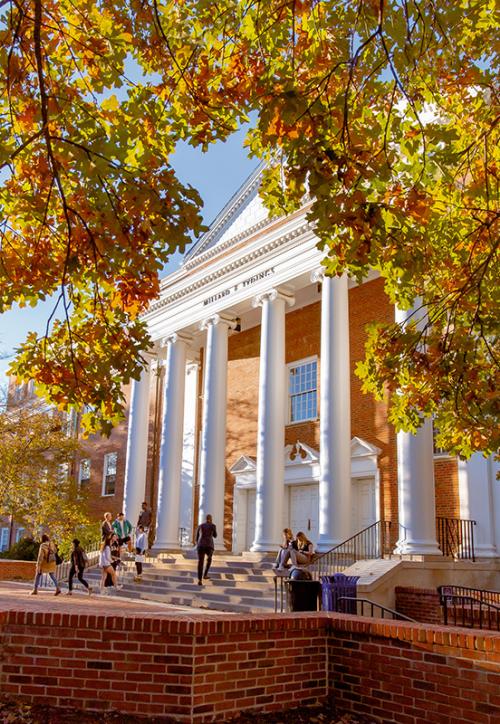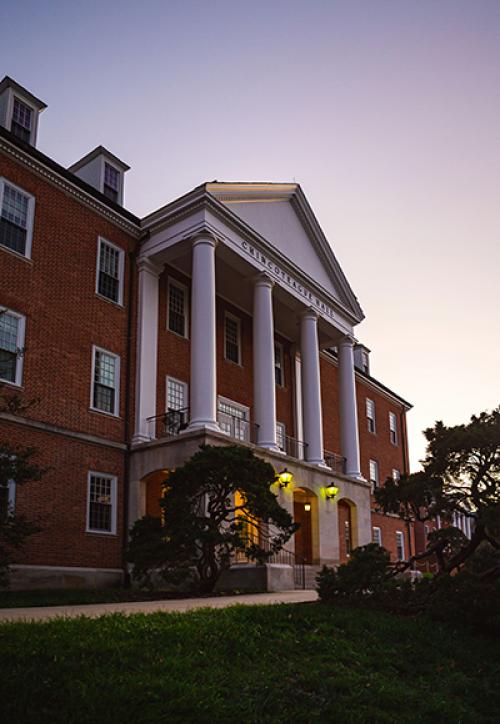Economics Professor Named as Member of the American Academy of Arts and Sciences
In recognition of his decades of transformative scholarship, John C. Haltiwanger—a Distinguished University Professor who serves as the Dudley and Louisa Dillard Professor of Economics in the Department of Economics—was named as a new member of the American Academy of Arts and Sciences. The academy is one of the nation’s most historic and prestigious honorary societies.
Membership in the American Academy of Arts and Sciences recognizes accomplishments and leadership in academia, the arts, industry, public policy, and research.
“I am deeply honored to have been elected to the academy, an institution composed of truly inspiring people across the arts and sciences. The society dates back to 1780 with early members including Benjamin Franklin and George Washington,” Haltiwanger said. “AAAS members span the arts and sciences with an enormously distinguished group. It is a special honor to be included amongst the group of economists that inspired much of my work, including George Akerlof, Olivier Blanchard, Peter Diamond, Zvi Griliches, Dale Mortensen and Janet Yellen. In addition, it is a great honor to be a member of this society with my distinguished University of Maryland colleague and co-author Katharine Abraham.”
Since the 1980s, Haltiwanger has played a major role in developing and studying U.S. longitudinal firm-level data. Using these data, he has developed new statistical measures and analyzed the determinants of firm-level job creation, job destruction and economic performance. He has explored the implications of these firm dynamics for aggregate U.S. productivity growth and for the U.S. labor market.
The statistical and measurement methods Haltiwanger has helped to develop in order to measure and study firm dynamics have been increasingly used by many statistical agencies around the world. His own research increasingly uses the data and measures on firm dynamics from a substantial number of advanced, emerging and transition economies.
Professor and Chair Andrew Sweeting said that this honor reflects Haltiwanger’s numerous contributions to the university, and to the field of economics.
“The American Academy of Arts and Sciences’ recognition of John’s contributions to economics is richly deserved. John joined UMD’s faculty in 1987, and is world-renowned for his contributions to the understanding productivity, entrepreneurship and economic dynamism, and the accurate measurement of microeconomic and macroeconomic activity,” Sweeting said. “John is the foundation stone of a long-running collaboration between our department and the U.S. Census Bureau that has benefitted tens if not hundreds of Ph.D. students, many of whom have established their own careers studying similar questions. John is also an exceptional leader within the department, and continues to help guide the department’s thinking about its own future.”
Throughout his career, a hallmark of Haltiwanger’s work has been collaboration.
“I have had the good fortune to work with numerous fabulous co-authors, colleagues and students, to whom I owe much. My best-known work involves developing and studying new statistics tracking the contribution of business dynamism and entrepreneurship to U.S. job creation and productivity growth. I am very grateful for the 40-year partnership I have had with the U.S. Bureau of the Census in this work,” Haltiwanger said.
Currently, and looking ahead, Haltiwanger is working to bring economics measurement methodology for key economic indicators into the 21st century.
“The U.S. federal statistical agencies continue to produce high-quality statistics tracking the economy, but much of the current methodology was developed in the mid 20th century. It is a very survey-centric approach developed before the information technology revolution,” Haltiwanger said. “In 2025, much of economic activity is tracked in a host of digital data sources and repositories. I am actively working with co-authors, students and the statistical agencies to take advantage of this era of truly big data, along with machine learning methods to harvest and integrate such data.”
Published on Mon, May 5, 2025 - 11:50AM




